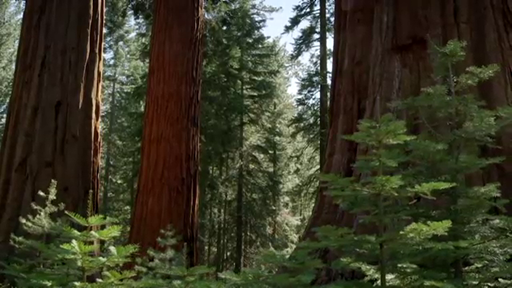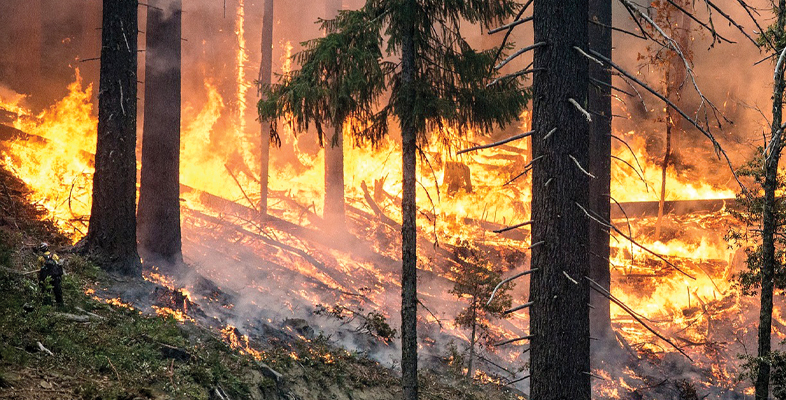2.3 Fire-stimulated seed release
Many pines and hardwood trees are frequently burnt in intense crown fires. They retain either all or a substantial proportion of the seeds on the mature plant. Seeds are held in long-lived woody fruits or cones, which are often attached to trunks or large branches in the canopy and open to release seeds only after fire. This phenomenon is called serotiny (‘late appearance’). At least 500 different woody trees and shrubs around the world are serotinous. Most occur in the Southern Hemisphere. In the Northern Hemisphere, serotiny is most common among pines. Jack pine (Pinus banksiana) in North America has serotinous cones held in the canopy that can withstand temperatures of up to 360 °C for one minute before igniting; heating to above 140 °C melts the resin that keeps the cones closed and liberates the protected seeds inside after the fire has passed (Figure 9). The trees have thin bark and retain their lower branches.
-
What would the advantage be to trees in having thin bark and retaining their lower branches?
-
Thin bark and the retention of lower branches would facilitate crown fires which are required for seeds to be released from cones which are held in the canopy.

Activity 3 Serotiny and fire
Watch Video 4, which describes how the serotinous North American giant sequoia depends on fire for reproduction.

Transcript: Video 4 Giant sequoias and fire.
NARRATOR: Giant sequoias are the largest trees on Earth. They can grow for more than 3000 years. But without fire, they cannot reproduce.
MAN: The giant sequoias really are born of fire. Fire gives them three things they need for regeneration. The first one is it punches a hole in the forest. That allows there to be more light and more water for the sequoia seedlings. The second thing it does is it heats the cones up in the mature sequoia trees, without harming the trees. And those cones open up and there’s a rain of seeds on the ground. And the final thing it’s done is it cleared away all the leaves that have built up, because sequoia seeds need to hit bare mineral soil before they can germinate and survive well.
Then the winter storms come in and bury them in a blanket of snow. And then when the spring comes, they have the ideal conditions. It’s warmer, it’s really wet, and those seeds will take off and become seedlings.
NARRATOR: From their birth among the ashes, these seedlings have become the groves we see today, with trees nearly 300 feet tall.
Mediterranean pines such as Pinus halepensis (Aleppo pine), Australian eucalyptus and many members of the family Proteaceae such as Banksia (Figure 10) and Hakea spp. (from South Africa and Australia respectively) show serotiny. The Aleppo pine seems to adopt a double strategy; trees simultaneously produce two types of cones: regular mature brown cones that open seasonally during hot dry days and serotinous cones that remain closed after maturation and only open in response to fire (Figure 11).

Serotiny is advantageous in areas that have high-intensity, fairly frequent fires. However, the degree of serotiny (i.e. the extent to which cones or fruits remain closed) may vary among populations of the same species depending on the fire regime. If fires are too frequent, there is insufficient time to accumulate the next crop of seeds. Conversely, if fires are not frequent or intense enough, seeds will not be released often enough.

